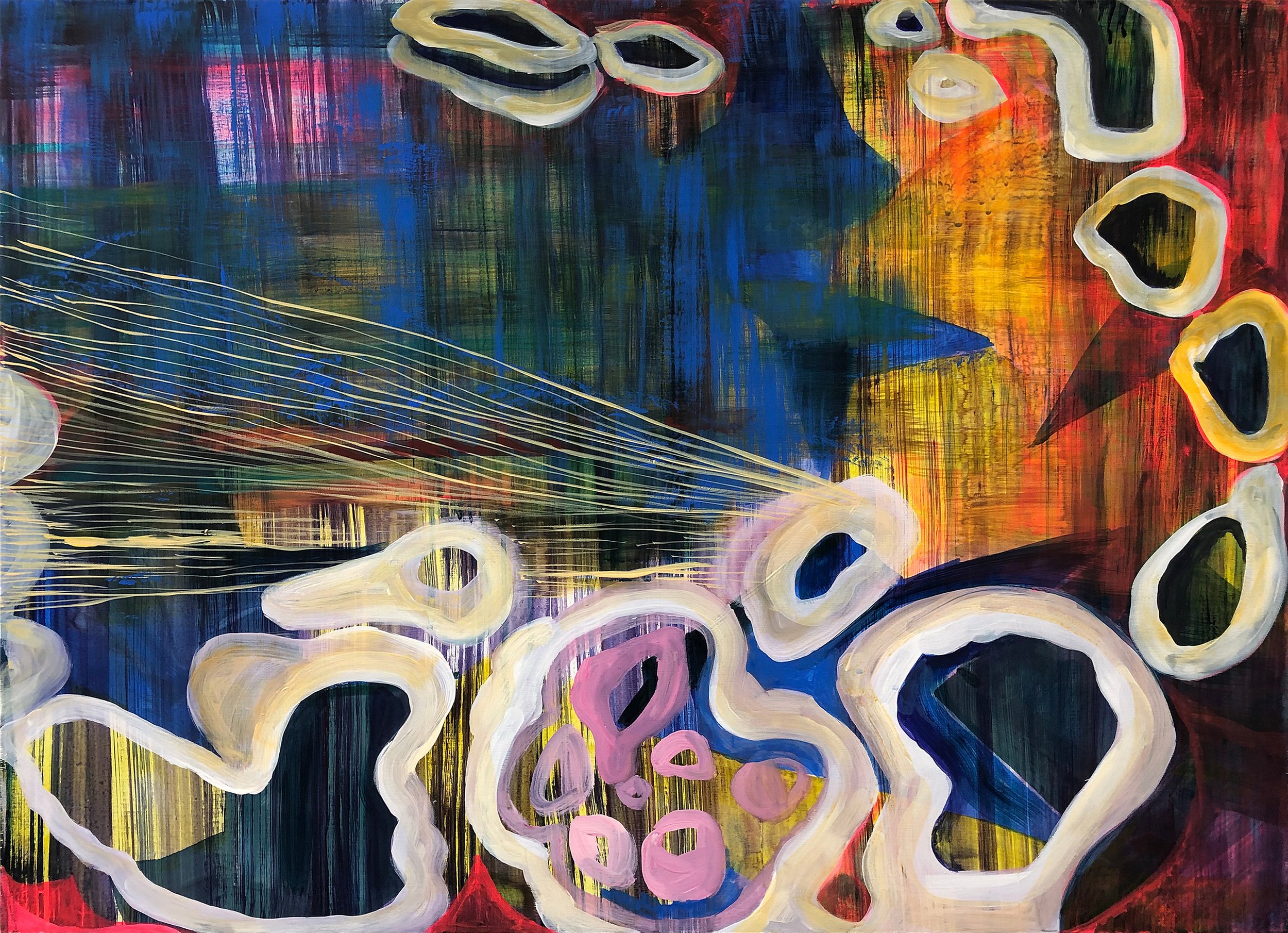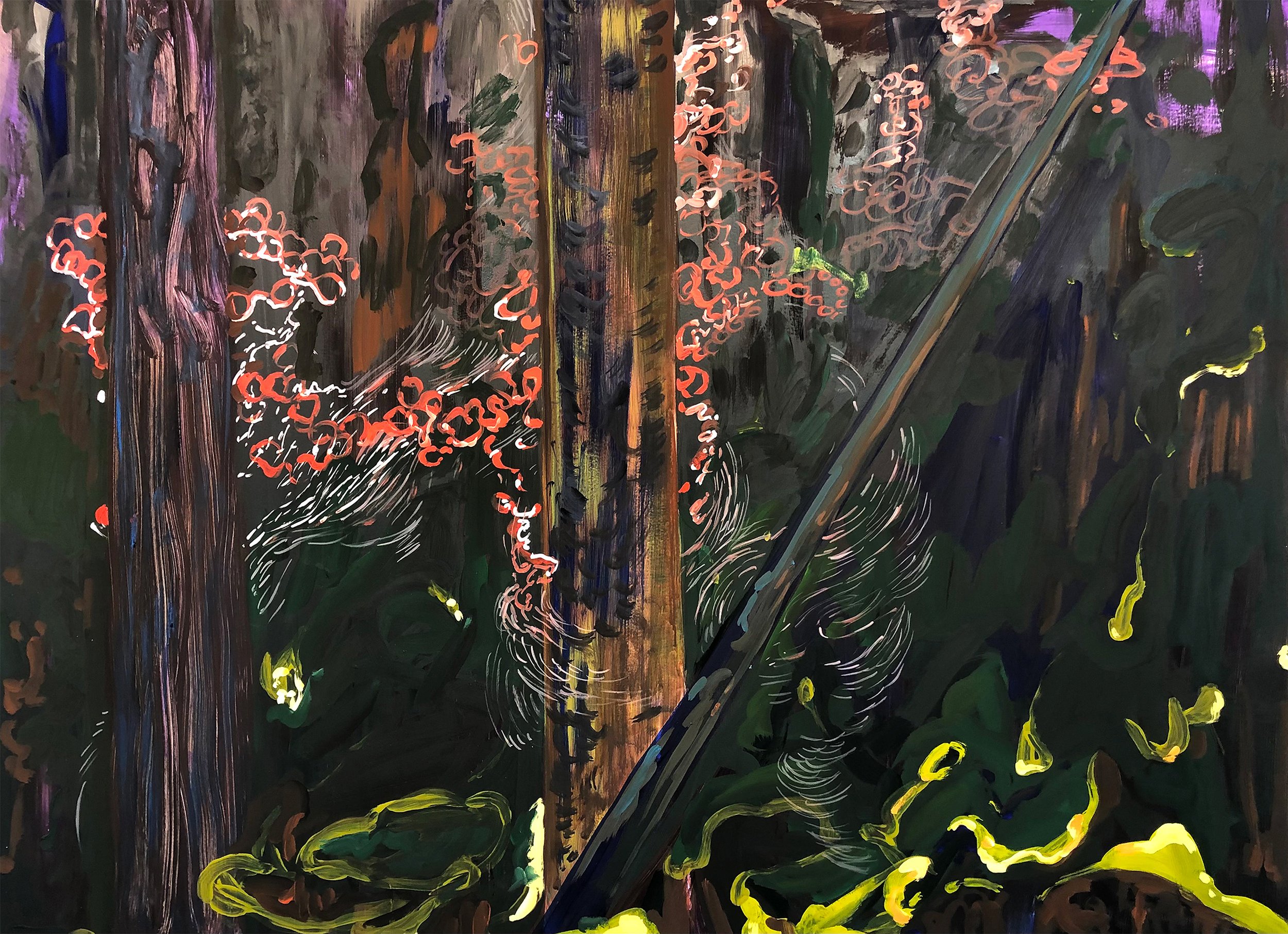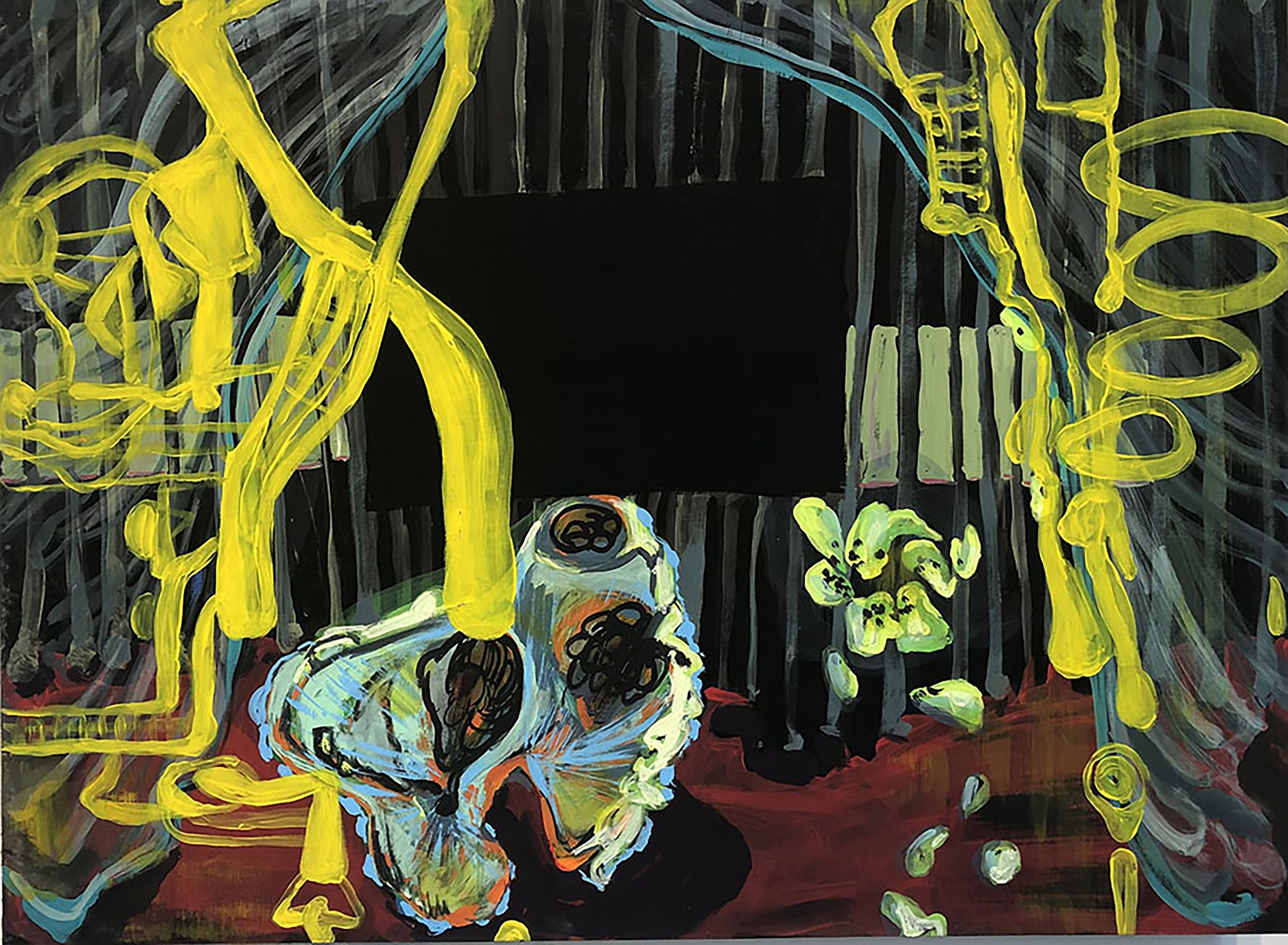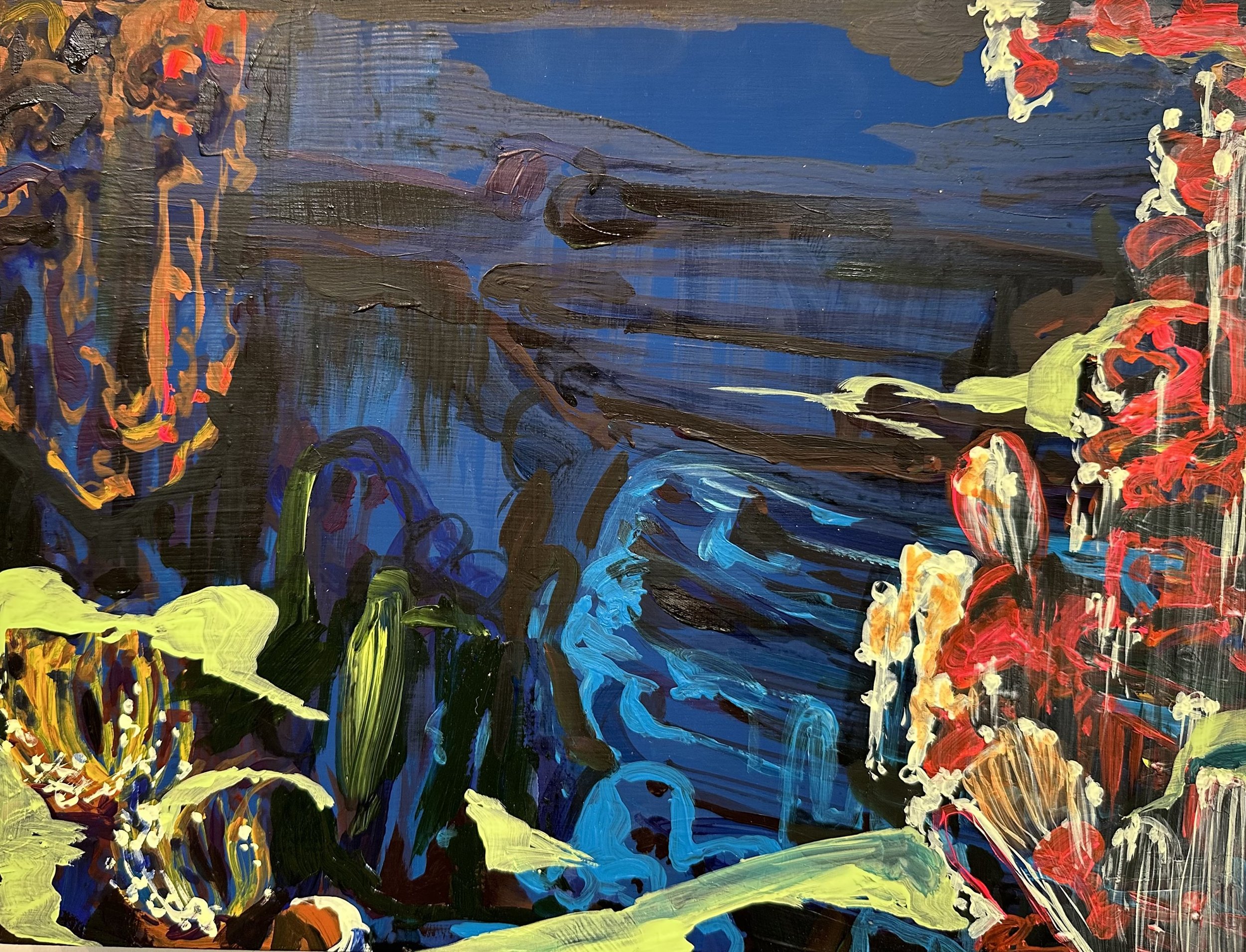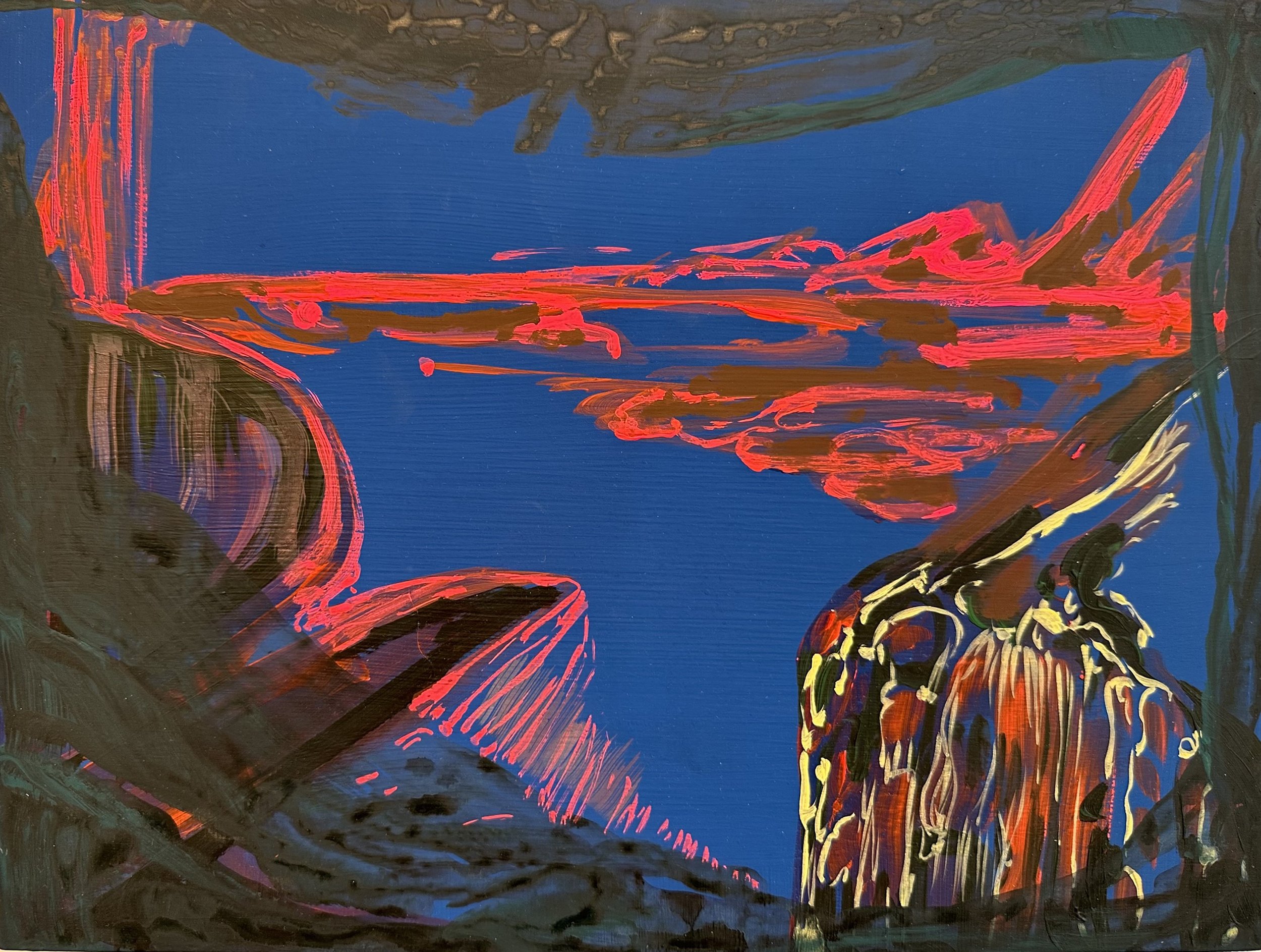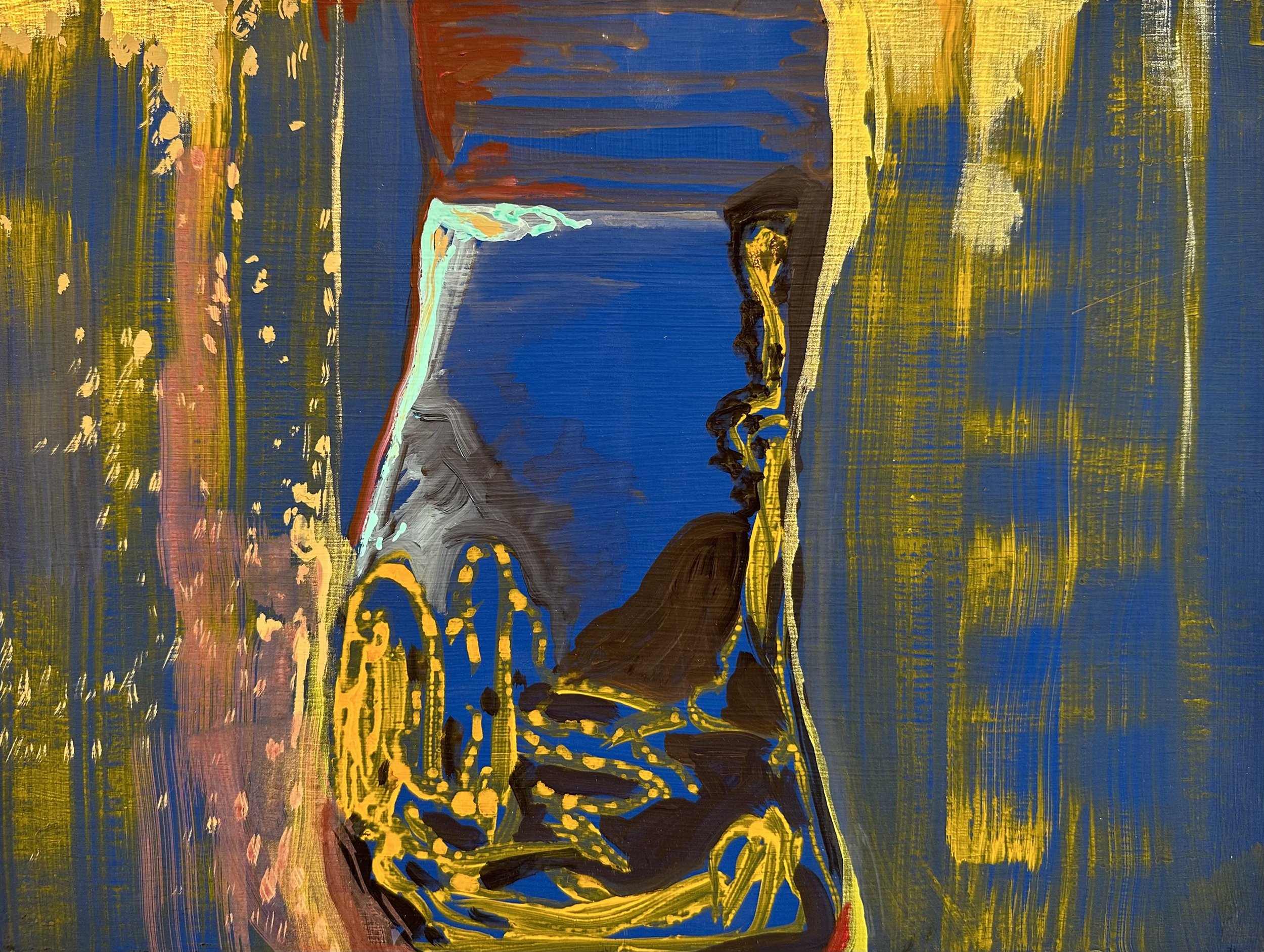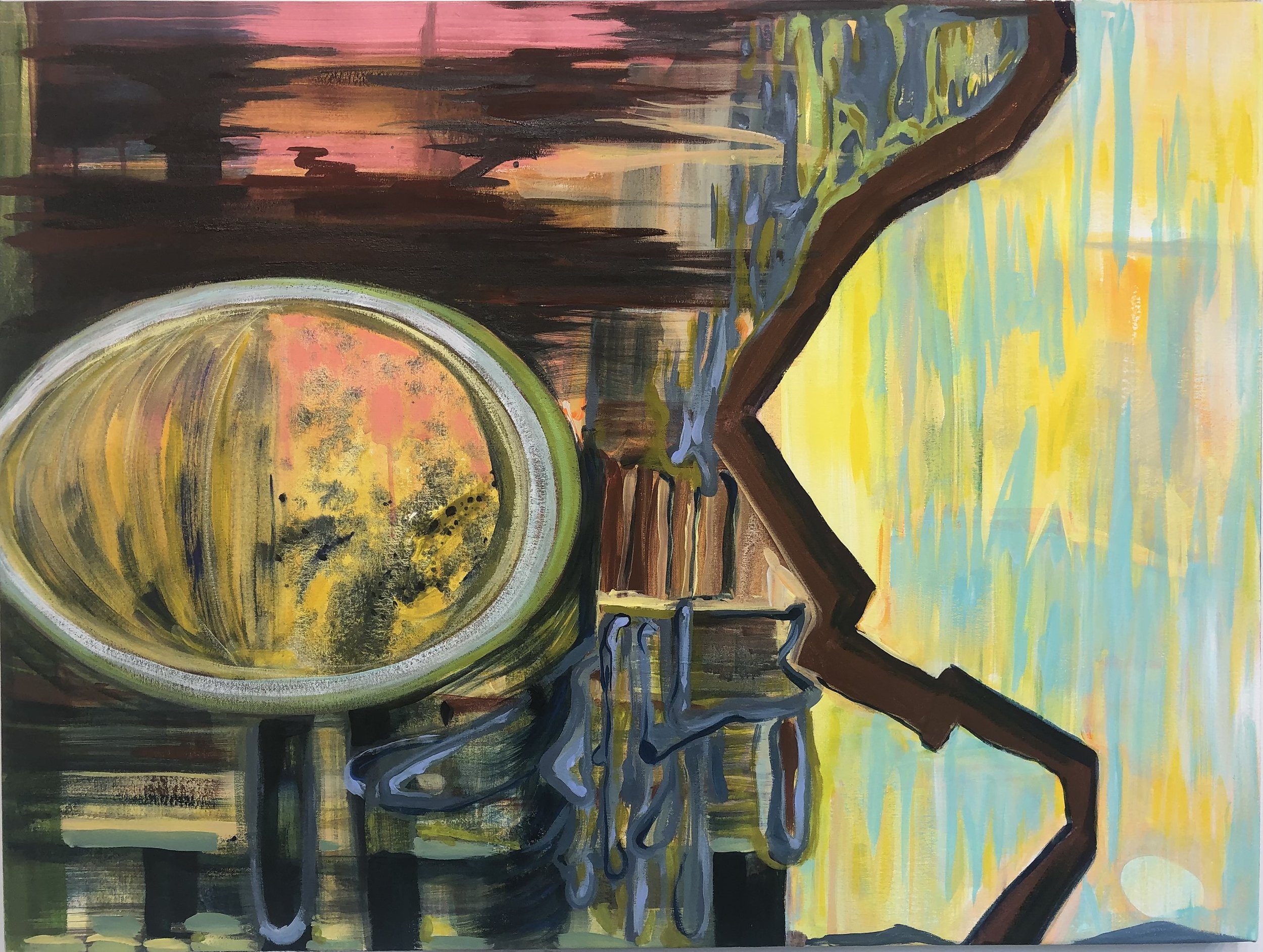A Thing in Time
Phoebe Adams
July 13 - Sept. 9, 2023
About the Show
We are part of the universe that has developed a remarkable ability: We can hold an image of the world in our minds. We are matter contemplating itself. - Sean Carroll
While physicists debate whether time is a fundamental or emergent property of nature, there is no question that it is fundamental to our lives. We were younger in the past and will be older in the future. We remember the past but not the future. For us, time flows in only one direction.
But that flow is relative. While time flows at a constant rate within our own personal frame of reference, that rate is different for every other frame of reference outside of our own. We are all irretrievably trapped together within a rushing river of time, but each of us experiences that river in an inevitably unique manner.
At a fundamental level, nature appears to be not just relativistic but also probabilistic, almost conspiring to prevent us from a shared experience of the natural world. Except that we have the art of narrative. We share our frames of reference with one another.
In her work, Phoebe Adams conveys landscapes, not in terms of her literal view, but in terms of her experience of nature. “The patterns and clusters of abstract lines evoke movement and the unseen forces animating the natural world.” - John Yau, Hyperallergic. Her paintings strive to reveal that “something deeply hidden” that animates the landscape, to share with the viewer an unfamiliar frame of reference that requires a closer look. The result is beautiful and emotional, even as and because Adams reveals deeper truths about our darkling plain.
Artist’s Statement:
“The facts of the world do not for the most part come in narrative form. We have to do that.” - Cormac McCarthy
How easy it is to forget that we are traveling through space and time as a huge sphere rotating on a wobbly orbit, all the while sending out and taking in gasses and photons from light years away. Our senses are not designed to perceive that level of reality. But between what our senses do tell us about the world and what we have come to know through scientific instrumentation, we map our sense of what is. We are, after all, a thing in time.
In that liminal space between what we know and what we don’t is a domain of imagination. That is the zone that compels a research scientist as well as an artist like me who uses painting as a way to look at the world and form a specific, dense narrative.
My lifelong interest in biomorphic forms has now been coupled with a passion to understand the implications of the changing environment. We perceive the outward traits of a given landscape, but there is much that we cannot see. Those hidden narratives - of the land and of our interactions with it - are primary to my work.
I don't depict the land in a literal sense. Rather I attempt to share my very personal observations about landscapes I love, in Maine and in the Western US. I call it the “Emily Dickinson” method - close observation of well-known places nearby.
What lies behind the obvious is most interesting, and what is in the periphery can be thrilling. In my artist’s eye the tidal river is changed by seeing and knowing what threatens its ecosystem. My footsteps in the arroyo are changed with knowing that water will not run clean again. The creep of darker changes in the landscape overlay and intermingle with the enormous beauty.
Looking is the first thing: making is what follows. In the words of Robert Henri, “If I cannot feel an undercurrent then I can only see a series of things. There is an undercurrent, the real life, beneath all appearances everywhere.” Looking for the best red hue is less important than reading the narrative space. Like the painter Charles Birchfield from earlier in the 20th century, it isn’t painting the moth or the star that matters, but capturing the confluence of the night with the weather.
~ Phoebe Adams
Preview the Exhibition
(CLICK IMAGE TO ENLARGE)
